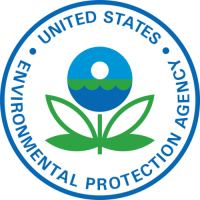The Environmental Protection Agency has issued a proposed rule to extend the compliance deadlines on the use of hydrofluorocarbons (HFCs) in a number of subsectors, including residential air conditioning, retail food refrigeration, cold storage warehouses, and semiconductor manufacturing.
In addition, EPA's proposal preserves current flexibilities for residential and light commercial air conditioning and heat pumps manufactured or imported before January 1, 2025, by allowing them to continue to be installed indefinitely, protecting and lowering costs for homeowners and small businesses.
The American Innovation and Manufacturing Act, enacted on December 27, 2020, directs EPA to address HFCs in three main ways: (1) phasing down HFC production and consumption through an allowance allocation program, (2) promulgating certain regulations for purposes of maximizing reclamation and minimizing releases of HFCs from equipment and ensuring the safety of technicians and consumers, and (3) facilitating the transition to next-generation technologies through sector-based restrictions.
In October 2023, the agency's Technology Transitions Rule placed restrictions on the use of high Global Warming Potential HFCs in aerosols, foams, refrigeration, air conditioning, and heat pump products, with prohibitions on manufacturing, distribution, sale, installation, import, and export effective January 1, 2025. In response to concerns about inventory stranding, a December 2023 interim final rule amended the compliance date, allowing installation of higher-GWP HFC equipment manufactured or imported before January 1, 2025, until January 1, 2026, and clarifies exclusions for residential ice makers.
Additionally, a December 2024 final rule further extended installation deadlines for higher-GWP HFC variable refrigerant flow systems, permitting installations until January 1, 2027, and for certain construction projects with permits issued before October 5, 2023, until January 1, 2028.
The proposed rule addresses changes on the use of HFCs in the residential and light commercial AC/Heat Pump subsector as set out in the 2023 Technology Transitions Rule. See p. 48010 at the above link. The EPA is proposing to retain the current requirements regarding the treatment of condensing units used in the residential and light commercial AC/HP subsector, with an opportunity for the public to comment on the treatment of condensing units in this subsector.
Specifically, EPA is proposing no change to the existing provisions at 40 CFR part 84, subpart B, pertaining to the treatment of certain condensing units used in the residential and light commercial AC/HP subsector. This would include no change to the definitions at 40 CFR 84.52, the installation restriction at 40 CFR 84.54(c)(1), the list of actions that the EPA considers an installation of a new system at 40 CFR 84.54(e), the exemption for components at 40 CFR 84.56(b), or the labeling, reporting, and recordkeeping requirements applicable to specified components.
Under the existing rules, new residential and light commercial AC/HP systems using legacy refrigerants, such as equipment that uses R–410A, can continue to be installed until January 1, 2026, using condensing units manufactured in the United States or imported into the United States before January 1, 2025.
Finally, the EPA is proposing to remove the installation compliance date for systems in the residential and light commercial AC/HP subsector, using components manufactured or imported prior to January 1, 2025. In light of current supply chain issues, the potential for future supply chain issues, as well as the fact that current rules do not allow for additional import or manufacture of equipment for new systems, the EPA no longer believes that limiting the ability to install new systems is warranted. Removing the installation compliance date allows industry to sell through remaining inventory of R–410A equipment that has been previously manufactured or imported.

 Admin - 03:00 pm -
October 09th, 2025
Admin - 03:00 pm -
October 09th, 2025 







